- Home
- Law & Order
- 'Satan Himself Lives In San Pedro': Scary Pictures Of The Most Violent City On Earth
'Satan Himself Lives In San Pedro': Scary Pictures Of The Most Violent City On Earth
In 2008, the mounting number of murders forced San Pedro Sula to store bodies in refrigerated trucks before transporting them to mass-burial sites.

A military coup ousted former president Manual Zelaya in 2009, and the tense political environment only caused more problems. Here, one of his supporters holds his photo during a protest in San Pedro Sula, many of which turned violent.
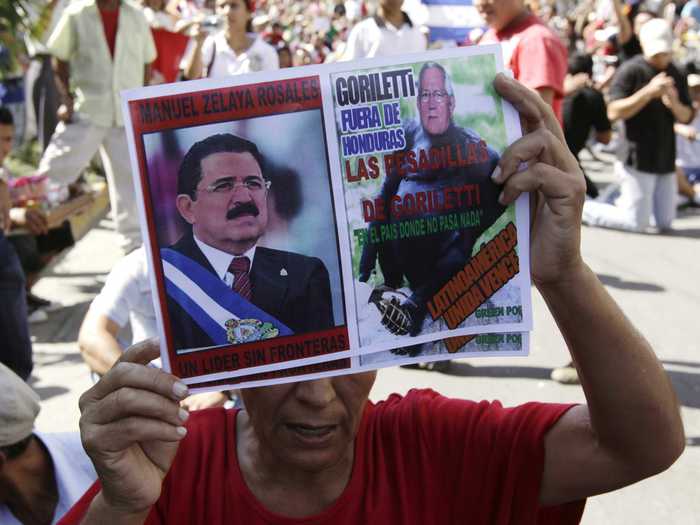
Source: New York Times
A shocking incident in 2010 saw 18 people massacred in a shoe shop as part of a gang war. This photo shows police searching for weapons the very next day.
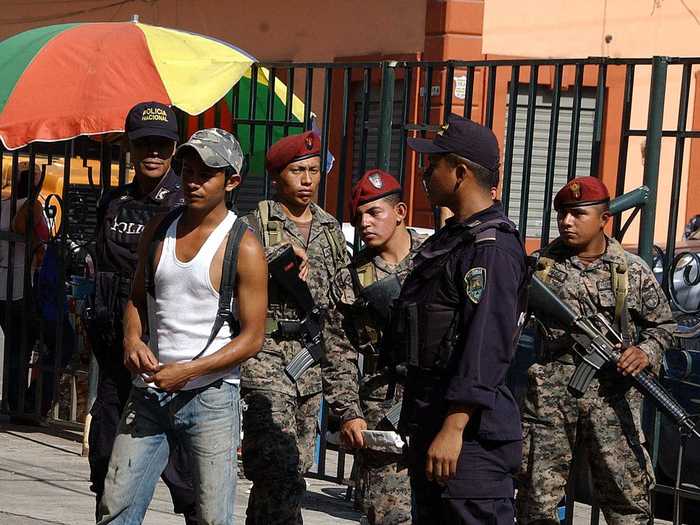
Six Honduran journalists were slayed in the first four months of 2010, including TV host Jorge Orellana who was shot in the head as he left his news station.
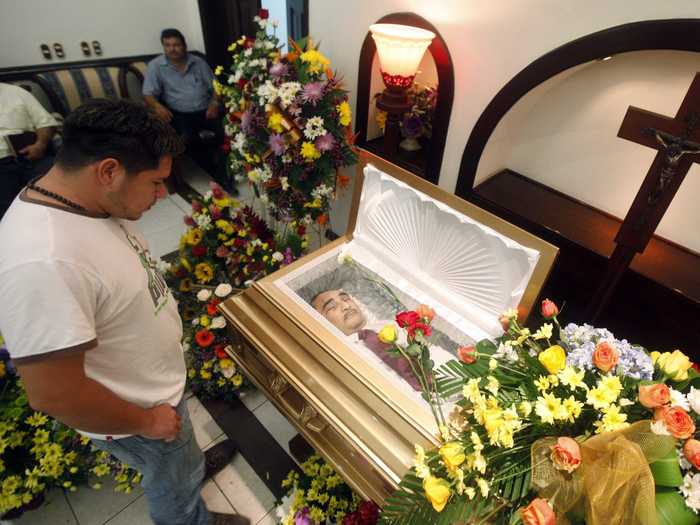
Source: Committee To Protect Journalists
Police can't keep airports safe either. Six people were killed in a mass shooting by unknown assailants Ramon Villeda Morales International Airport in 2011.
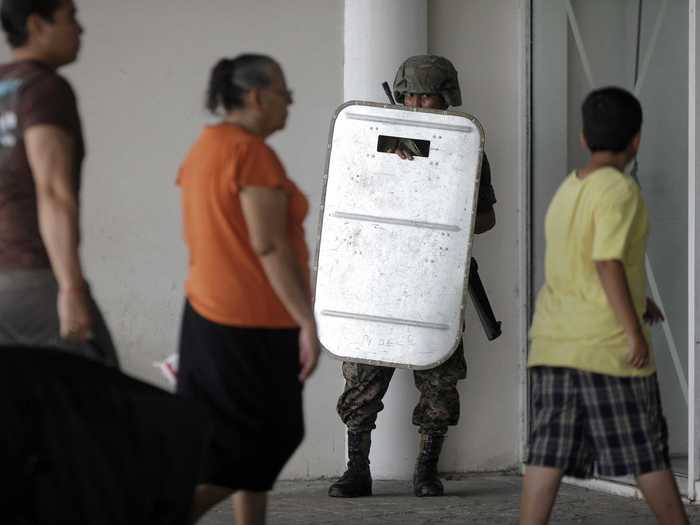
Honduras is playing an ever larger role in the drug trade. For example, San Pedro Sula police discovered the first Mexican-run cocaine lab found in Central American in 2011 (shown below).
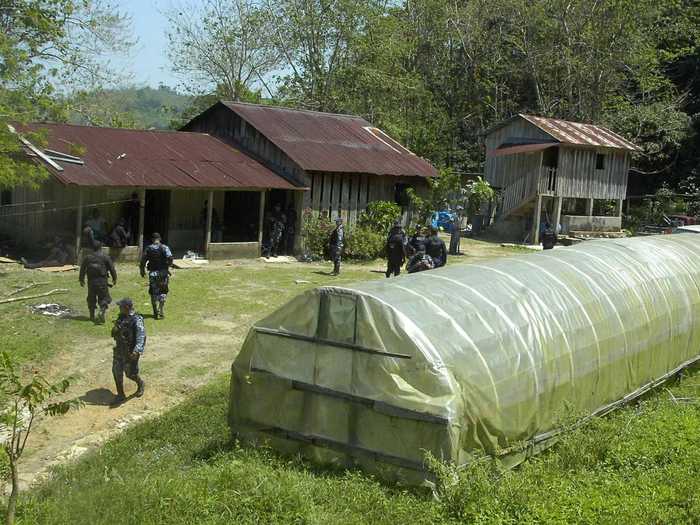
More than half of all cocaine seizures in Central America occur in El Salvador and Honduras, and Honduras' numbers more than tripled between 2010 and 2011. Below, military police guard a house seized in a drug raid in San Pedro Sula in 2012.
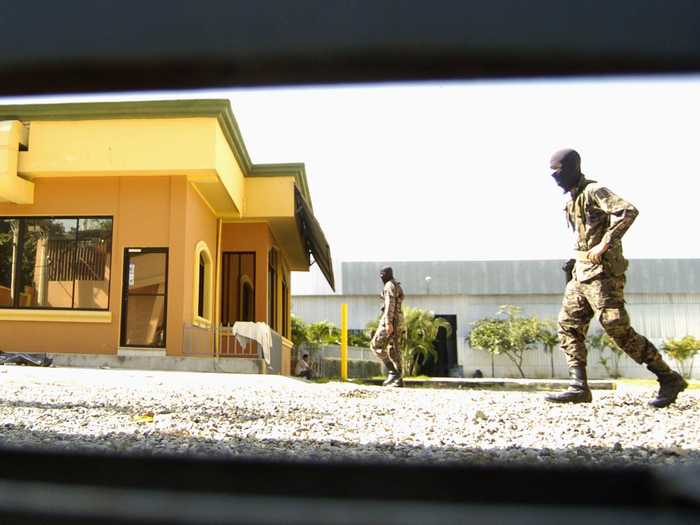
Drugs fuel much of the gang violence. One of the worst groups, "Mara Salvatrucha," also known as MS-13, developed among Central-American-born inmates in California in the 80s. The group's operations spread back to Honduras and El-Salvador with deportations.
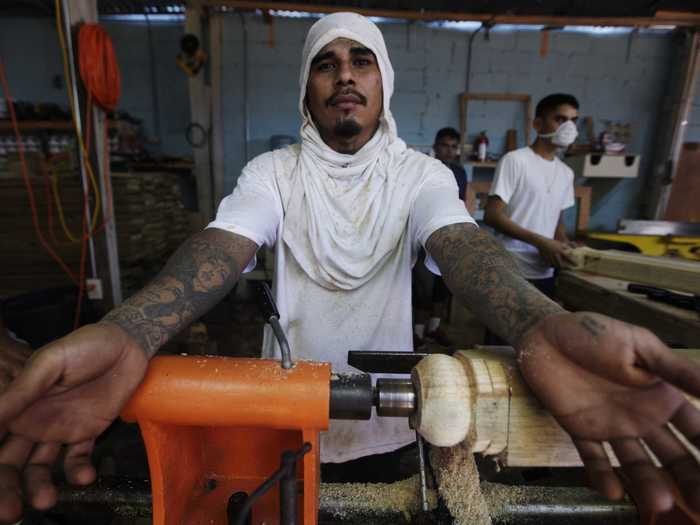
Source: The Associated Press
Not even prison can control the warfare. At least 14 inmates died in a massive riot in 2012 when rival gangs attacked each other with guns and machetes and started fires.
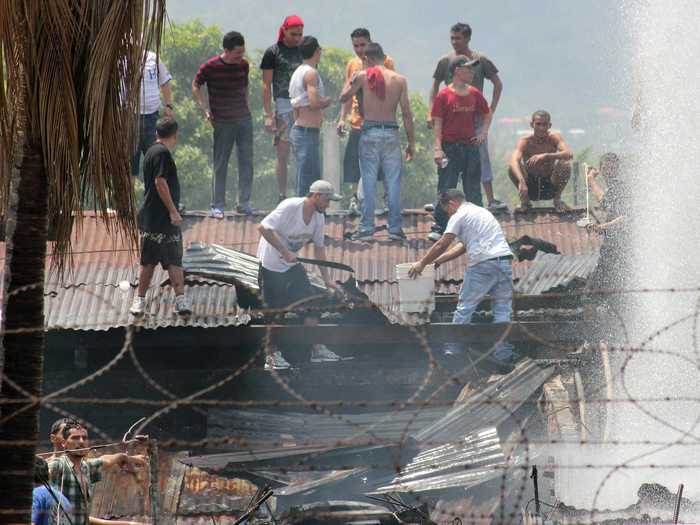
Honduras' "zero-tolerance" gang policy allows police to arrest youths simply for having a tattoo. Below, a laser burns one from a former gang member's shoulder.
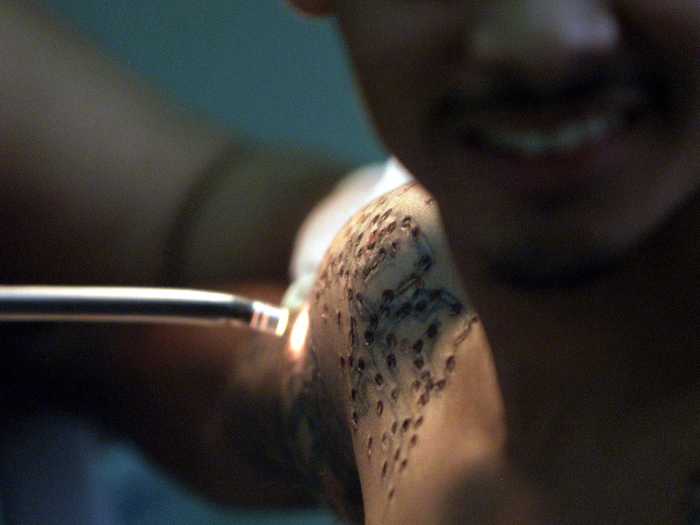
As a last resort, the church brokered a truce in May 2013 between gangs "Calle 18" and "Mara Salvatrucha." Below, masked members speak to the press with San Pedro Sula's bishop.
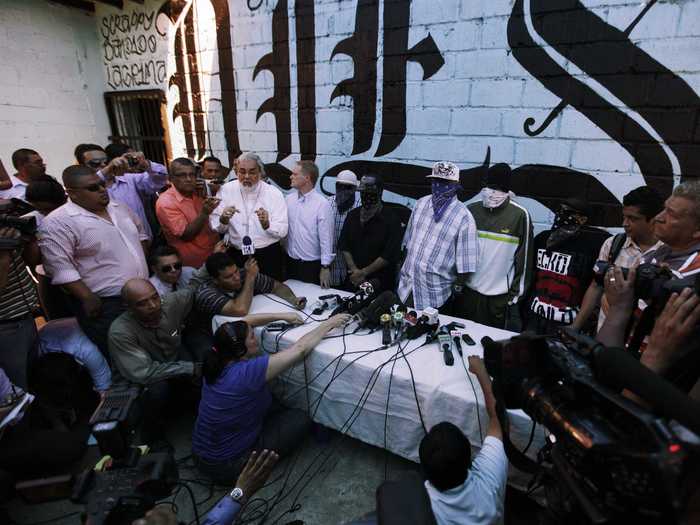
Citizens in San Pedro Sula also have to deal with a corrupt police force. At least five recent cases implicate officers in death-squad-style killings of gang members. Even police chief Juan Carlos “El Tigre” Bonilla faces accusations of extrajudicial killings.
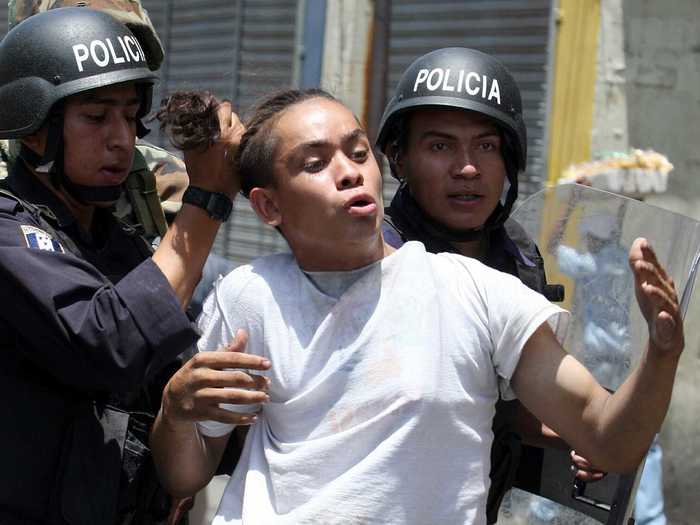
Source: The Guardian
In another attempt to quell tensions, the Honduran government sent about 1,000 military police into Tegucigalpa and San Pedro Sula in 2013.
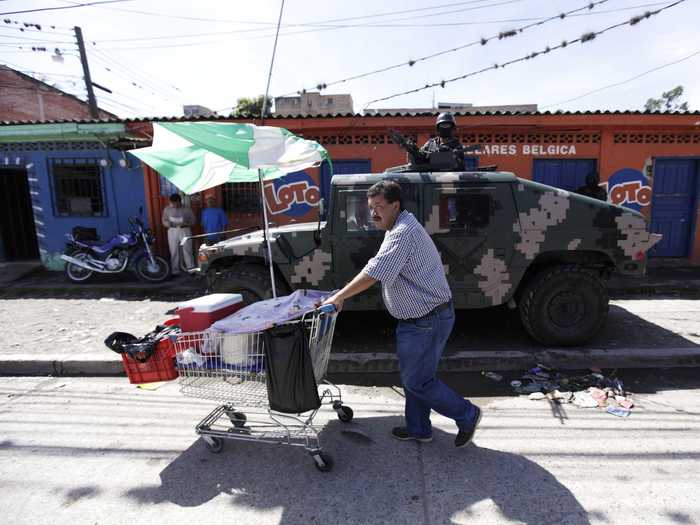
Source: Bloomberg
They even board public buses at checkpoints throughout the city to look for weapons and drugs.
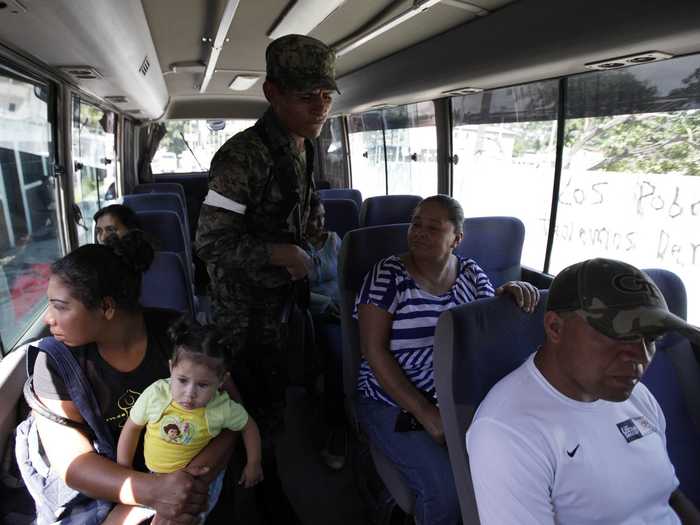
Police confiscated the weapons below from members of the "Mara 18" gang after a drug sting in March 2013. Lax laws allow citizens in Honduras to own as many as five personal guns. In Honduras, firearms cause 83.4% of homicides, compared to 60% in the United States.
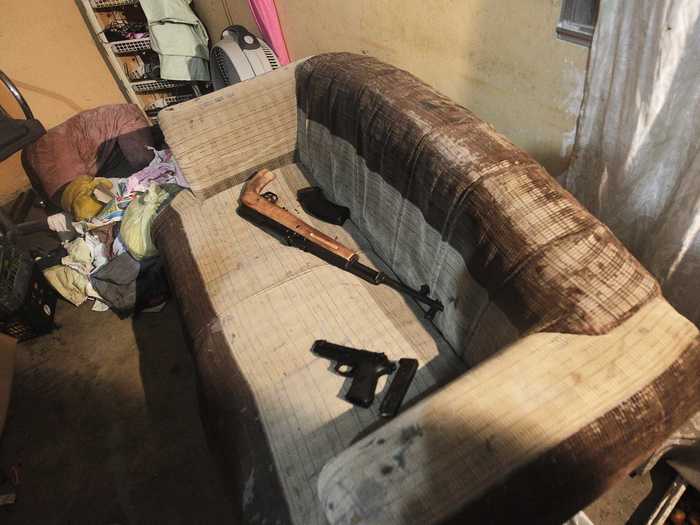
Source: Reuters
San Pedro Sulans don't just live in fear but also poverty. More than half the country's population lives below the poverty-line, and unemployment hovers near 30%. This man holds his baby outside their makeshift home in the "Rio Blanco" neighborhood of San Pedro Sula.

Source: Children International
Almost 1.5 million people have no access to potable water in Honduras, according to a United Nations Development Programme report. Many families wash their clothes and drink from the same sources.
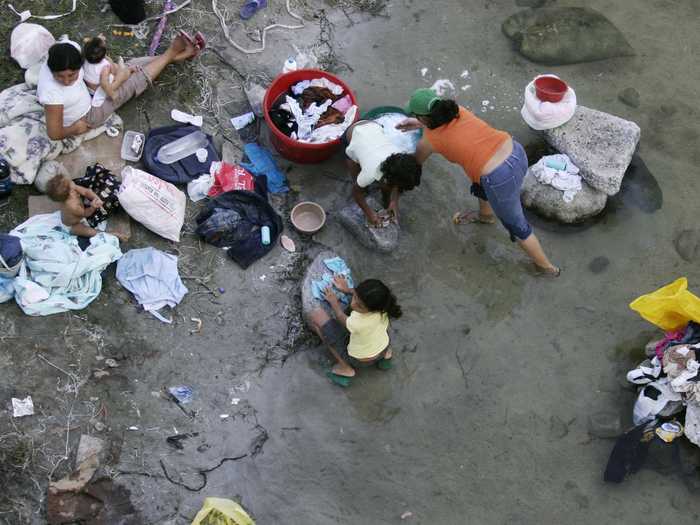
Source: Reuters
The poor living conditions arguably hit children the hardest. In Honduras, 2/3 of children live in poverty, and 8% are underweight. Social workers found Jason Lopez, 9, weighing only 17.6 pounds — a normal weight for a 2-year-old. Here, he recovers from severe malnutrition at a hospital in San Pedro Sula.
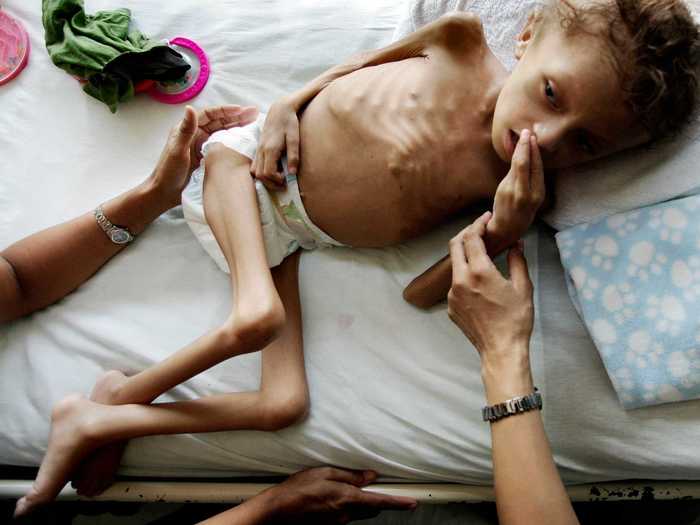
Source: UNICEF
Roughly 80% of citizens don't have access to health care, and many families either pay out-of-pocket for medical attention or go without. Below, volunteers treat a sick woman in the back of a truck.
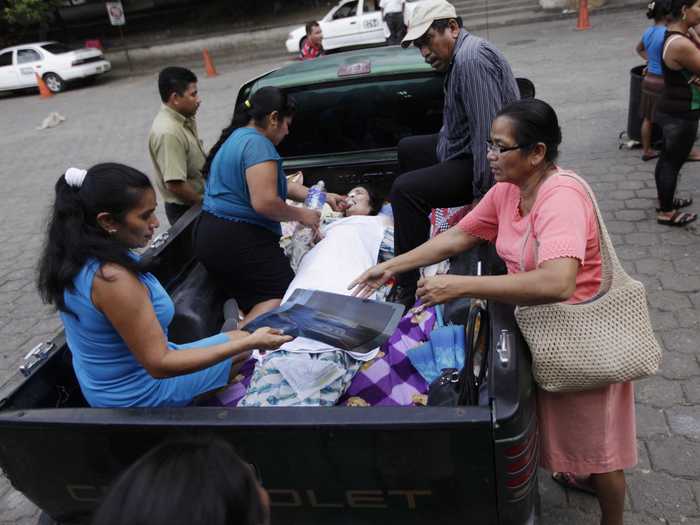
Source: AmeriCares
To make matters worse, about 33 thousand Hondurans, like Wendy Hernandez below, live with HIV/AIDS, according to a UNICEF estimate. Hernandez became infected when she was raped 10 years ago. Her son, three at the time of the photo, is also HIV-positive.

Source: UNICEF
To escape the poor living conditions and violence, many Hondurans flee the country, but the U.S. does its best to send them back. Here, deportees walk toward an immigration office after arriving in San Pedro Sula on a flight from the U.S. In 2012, the U.S. deported more than 32,240 Hondurans by air.
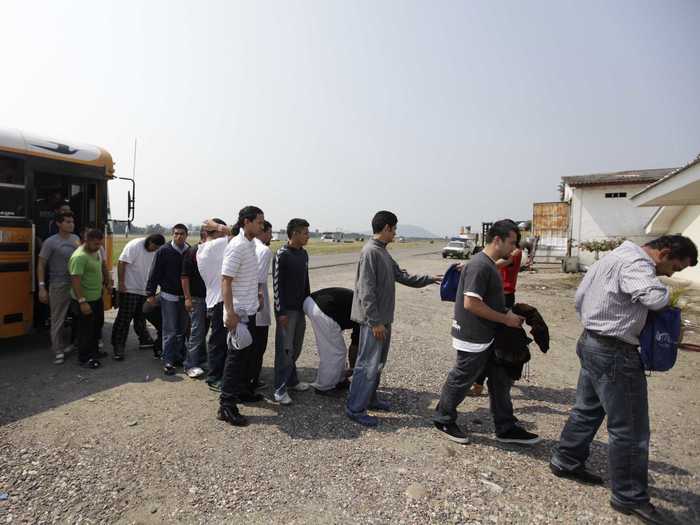
Source: Reuters
A lot rested on the country's November 2013 election. Both candidates vowed to crack down on drug-related violence that gives Honduras the highest homicide rate in the world. Below, a soldier guards boxes containing electoral papers in San Pedro Sula.

But many worried about increased violence during the election. Journalists in Honduras and even the candidates received death threats. The graffiti below reads, "This may not happen to you, visit us."
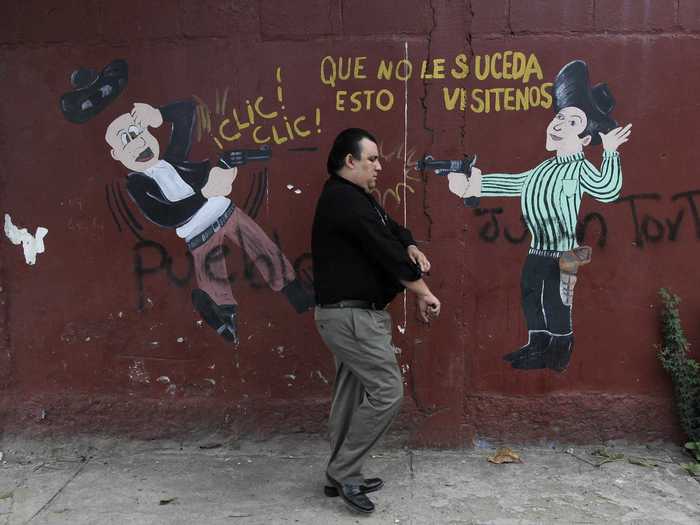
Source: PanAm Post
In the end, both candidates — Xiomara Castro, the wife of ousted former President Zelaya, and National Party candidate Juan Hernandez — claimed victory. The electoral authority, however, said a partial tally of votes gave Hernandez nearly 35 percent support and Castro just over 28 percent. Below, Hernandez celebrates his victory.
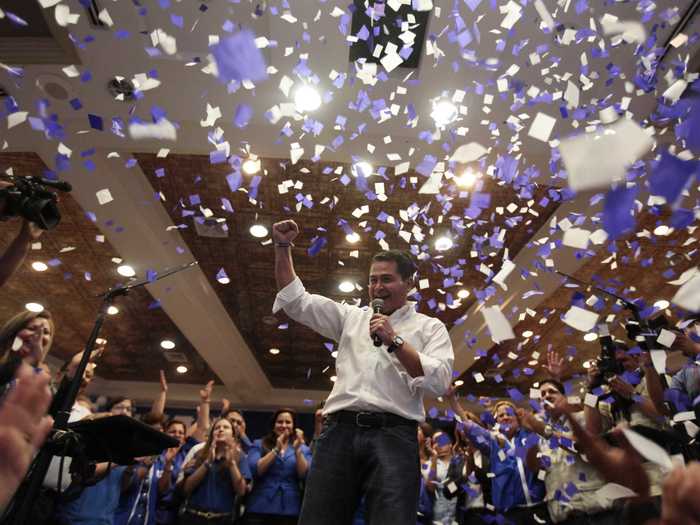
Source: Reuters
Riots broke out across Honduras because Castro, the losing candidate, denounced the election as a fraud and refused to accept the results. Below, police charge toward student protestors in Tegucigalpa.
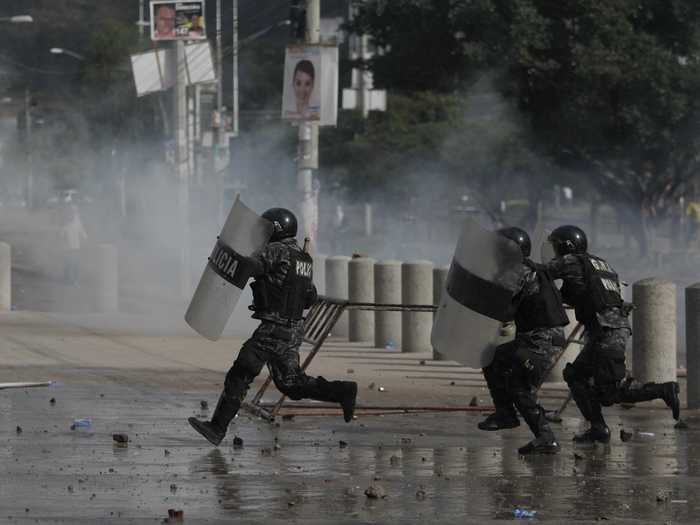
Source: Reuters
Whatever the future holds for Honduras, citizens continue to plead for action. Here, a devotee of the Light of the World Church holds a protest sign reading: "No to juvenile violence."
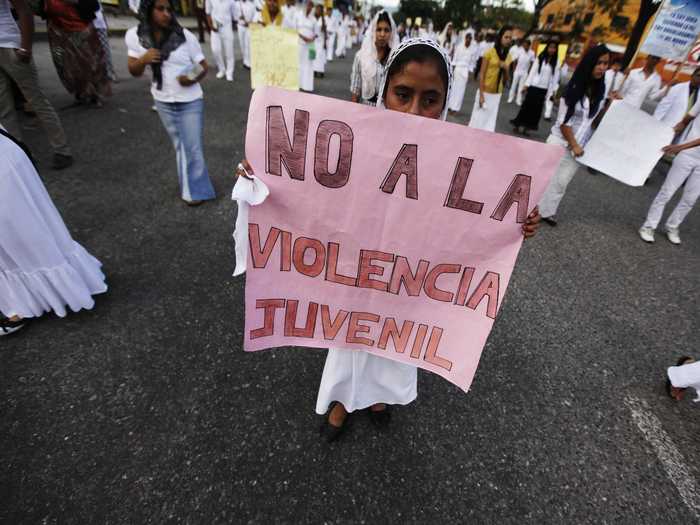
Source: Reuters
Now that you've seen the horrors of San Pedro Sula ...
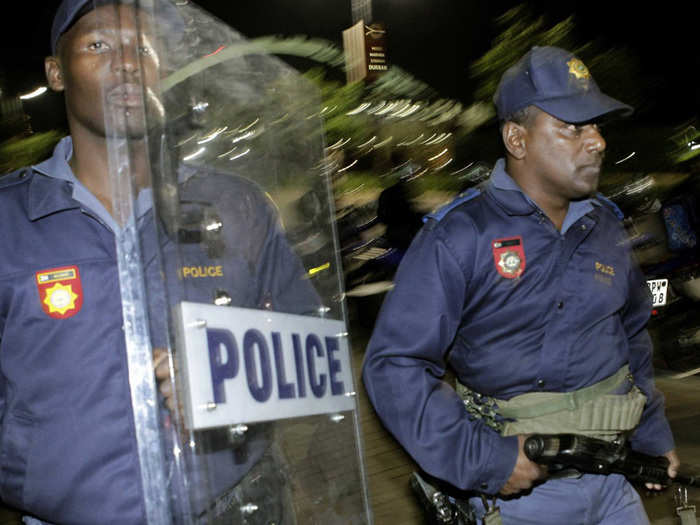
Popular Right Now
Popular Keywords
Advertisement